Mingqi Yang
MiniMax-Speech: Intrinsic Zero-Shot Text-to-Speech with a Learnable Speaker Encoder
May 12, 2025Abstract:We introduce MiniMax-Speech, an autoregressive Transformer-based Text-to-Speech (TTS) model that generates high-quality speech. A key innovation is our learnable speaker encoder, which extracts timbre features from a reference audio without requiring its transcription. This enables MiniMax-Speech to produce highly expressive speech with timbre consistent with the reference in a zero-shot manner, while also supporting one-shot voice cloning with exceptionally high similarity to the reference voice. In addition, the overall quality of the synthesized audio is enhanced through the proposed Flow-VAE. Our model supports 32 languages and demonstrates excellent performance across multiple objective and subjective evaluations metrics. Notably, it achieves state-of-the-art (SOTA) results on objective voice cloning metrics (Word Error Rate and Speaker Similarity) and has secured the top position on the public TTS Arena leaderboard. Another key strength of MiniMax-Speech, granted by the robust and disentangled representations from the speaker encoder, is its extensibility without modifying the base model, enabling various applications such as: arbitrary voice emotion control via LoRA; text to voice (T2V) by synthesizing timbre features directly from text description; and professional voice cloning (PVC) by fine-tuning timbre features with additional data. We encourage readers to visit https://minimax-ai.github.io/tts_tech_report for more examples.
Bridging Molecular Graphs and Large Language Models
Mar 05, 2025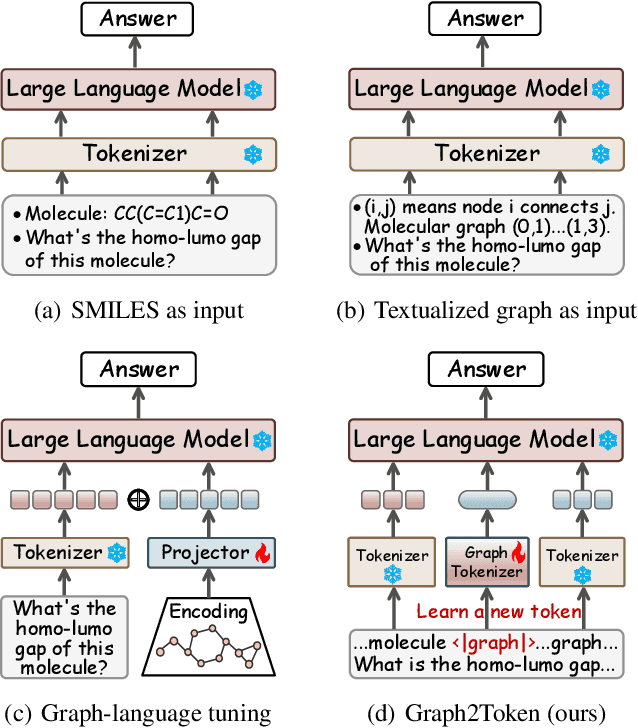
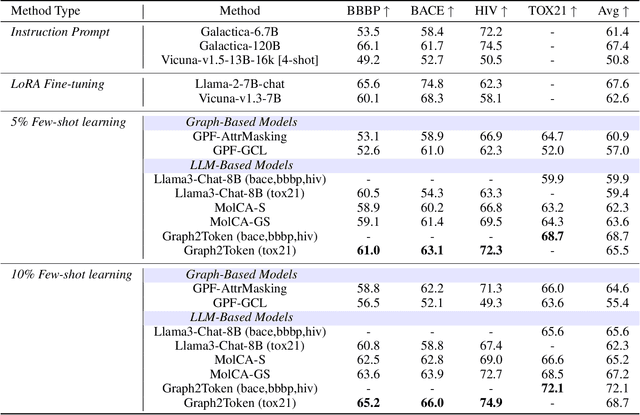
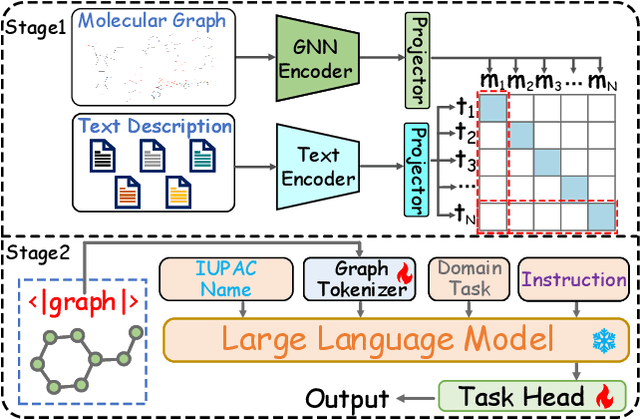

Abstract:While Large Language Models (LLMs) have shown exceptional generalization capabilities, their ability to process graph data, such as molecular structures, remains limited. To bridge this gap, this paper proposes Graph2Token, an efficient solution that aligns graph tokens to LLM tokens. The key idea is to represent a graph token with the LLM token vocabulary, without fine-tuning the LLM backbone. To achieve this goal, we first construct a molecule-text paired dataset from multisources, including CHEBI and HMDB, to train a graph structure encoder, which reduces the distance between graphs and texts representations in the feature space. Then, we propose a novel alignment strategy that associates a graph token with LLM tokens. To further unleash the potential of LLMs, we collect molecular IUPAC name identifiers, which are incorporated into the LLM prompts. By aligning molecular graphs as special tokens, we can activate LLM generalization ability to molecular few-shot learning. Extensive experiments on molecular classification and regression tasks demonstrate the effectiveness of our proposed Graph2Token.
LemmaHead: RAG Assisted Proof Generation Using Large Language Models
Jan 27, 2025Abstract:Developing the logic necessary to solve mathematical problems or write mathematical proofs is one of the more difficult objectives for large language models (LLMS). Currently, the most popular methods in literature consists of fine-tuning the model on written mathematical content such as academic publications and textbooks, so that the model can learn to emulate the style of mathematical writing. In this project, we explore the effectiveness of using retrieval augmented generation (RAG) to address gaps in the mathematical reasoning of LLMs. We develop LemmaHead, a RAG knowledge base that supplements queries to the model with relevant mathematical context, with particular focus on context from published textbooks. To measure our model's performance in mathematical reasoning, our testing paradigm focuses on the task of automated theorem proving via generating proofs to a given mathematical claim in the Lean formal language.
Towards Better Graph Representation Learning with Parameterized Decomposition & Filtering
May 10, 2023

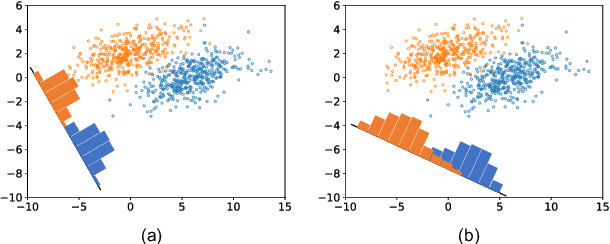
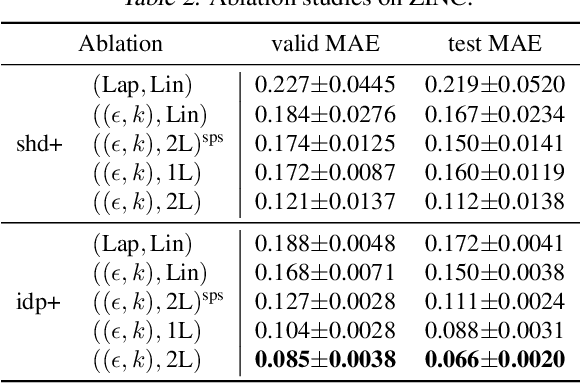
Abstract:Proposing an effective and flexible matrix to represent a graph is a fundamental challenge that has been explored from multiple perspectives, e.g., filtering in Graph Fourier Transforms. In this work, we develop a novel and general framework which unifies many existing GNN models from the view of parameterized decomposition and filtering, and show how it helps to enhance the flexibility of GNNs while alleviating the smoothness and amplification issues of existing models. Essentially, we show that the extensively studied spectral graph convolutions with learnable polynomial filters are constrained variants of this formulation, and releasing these constraints enables our model to express the desired decomposition and filtering simultaneously. Based on this generalized framework, we develop models that are simple in implementation but achieve significant improvements and computational efficiency on a variety of graph learning tasks. Code is available at https://github.com/qslim/PDF.
Soft-mask: Adaptive Substructure Extractions for Graph Neural Networks
Jun 11, 2022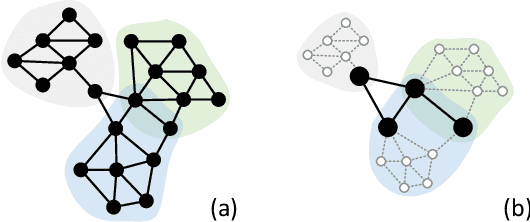
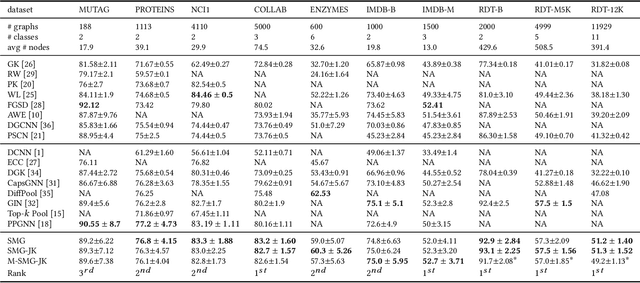
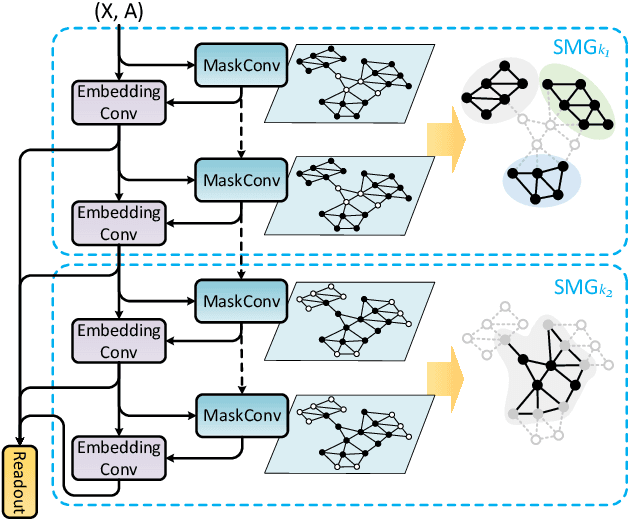

Abstract:For learning graph representations, not all detailed structures within a graph are relevant to the given graph tasks. Task-relevant structures can be $localized$ or $sparse$ which are only involved in subgraphs or characterized by the interactions of subgraphs (a hierarchical perspective). A graph neural network should be able to efficiently extract task-relevant structures and be invariant to irrelevant parts, which is challenging for general message passing GNNs. In this work, we propose to learn graph representations from a sequence of subgraphs of the original graph to better capture task-relevant substructures or hierarchical structures and skip $noisy$ parts. To this end, we design soft-mask GNN layer to extract desired subgraphs through the mask mechanism. The soft-mask is defined in a continuous space to maintain the differentiability and characterize the weights of different parts. Compared with existing subgraph or hierarchical representation learning methods and graph pooling operations, the soft-mask GNN layer is not limited by the fixed sample or drop ratio, and therefore is more flexible to extract subgraphs with arbitrary sizes. Extensive experiments on public graph benchmarks show that soft-mask mechanism brings performance improvements. And it also provides interpretability where visualizing the values of masks in each layer allows us to have an insight into the structures learned by the model.
Improving Spectral Graph Convolution for Learning Graph-level Representation
Dec 14, 2021
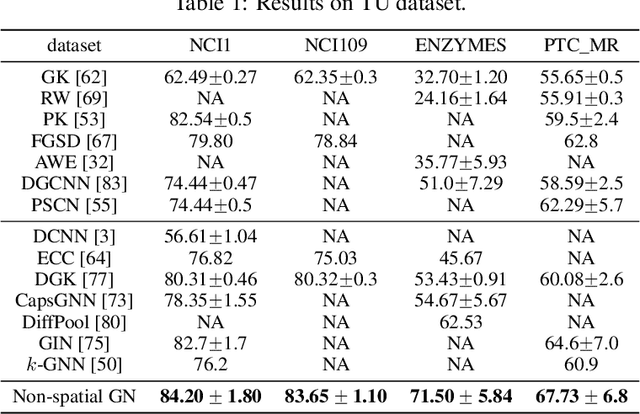

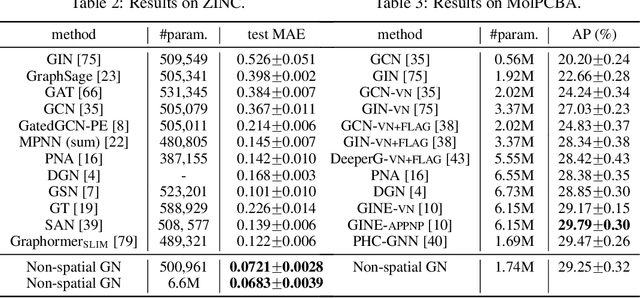
Abstract:From the original theoretically well-defined spectral graph convolution to the subsequent spatial bassed message-passing model, spatial locality (in vertex domain) acts as a fundamental principle of most graph neural networks (GNNs). In the spectral graph convolution, the filter is approximated by polynomials, where a $k$-order polynomial covers $k$-hop neighbors. In the message-passing, various definitions of neighbors used in aggregations are actually an extensive exploration of the spatial locality information. For learning node representations, the topological distance seems necessary since it characterizes the basic relations between nodes. However, for learning representations of the entire graphs, is it still necessary to hold? In this work, we show that such a principle is not necessary, it hinders most existing GNNs from efficiently encoding graph structures. By removing it, as well as the limitation of polynomial filters, the resulting new architecture significantly boosts performance on learning graph representations. We also study the effects of graph spectrum on signals and interpret various existing improvements as different spectrum smoothing techniques. It serves as a spatial understanding that quantitatively measures the effects of the spectrum to input signals in comparison to the well-known spectral understanding as high/low-pass filters. More importantly, it sheds the light on developing powerful graph representation models.
First Place Solution of KDD Cup 2021 & OGB Large-Scale Challenge Graph Prediction Track
Jun 20, 2021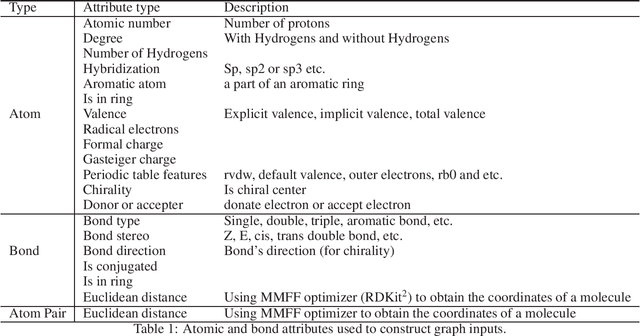
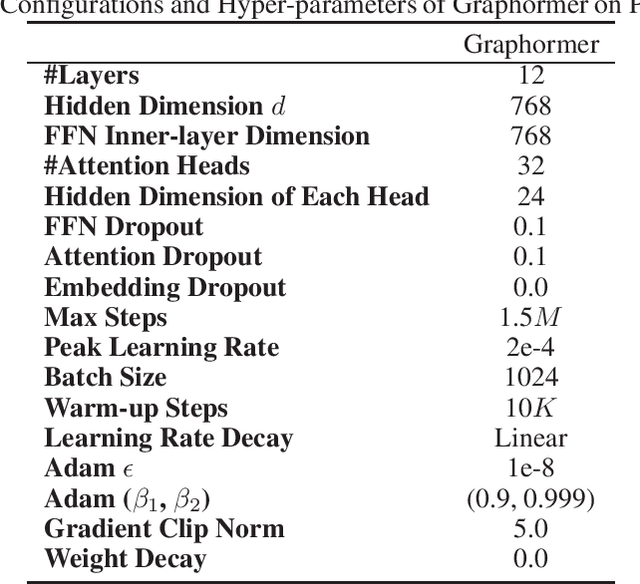
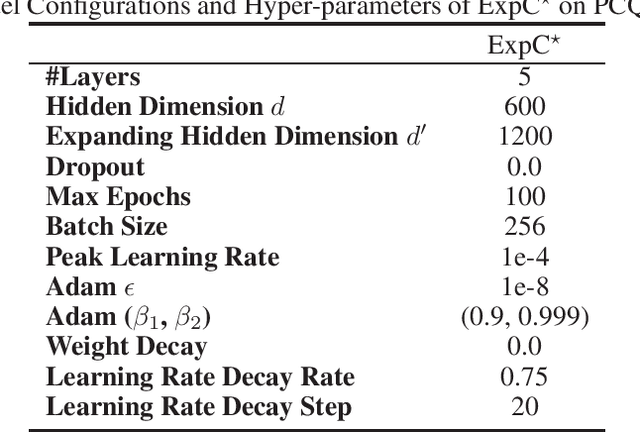
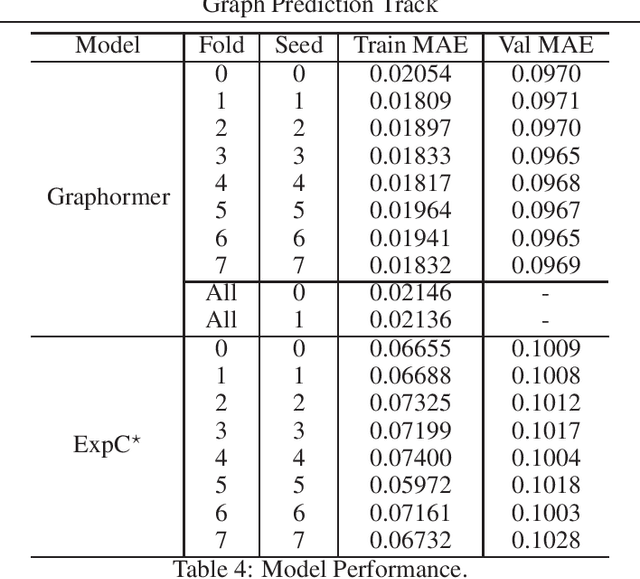
Abstract:In this technical report, we present our solution of KDD Cup 2021 OGB Large-Scale Challenge - PCQM4M-LSC Track. We adopt Graphormer and ExpC as our basic models. We train each model by 8-fold cross-validation, and additionally train two Graphormer models on the union of training and validation sets with different random seeds. For final submission, we use a naive ensemble for these 18 models by taking average of their outputs. Using our method, our team MachineLearning achieved 0.1200 MAE on test set, which won the first place in KDD Cup graph prediction track.
Breaking the Expressive Bottlenecks of Graph Neural Networks
Dec 14, 2020
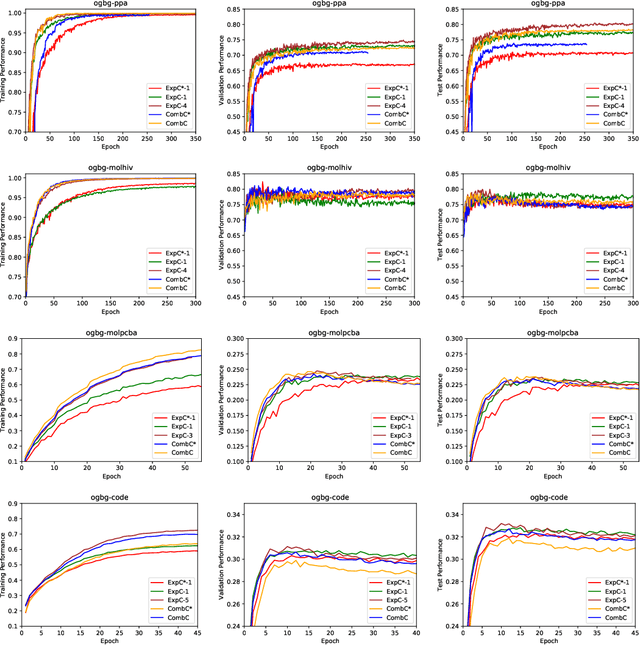

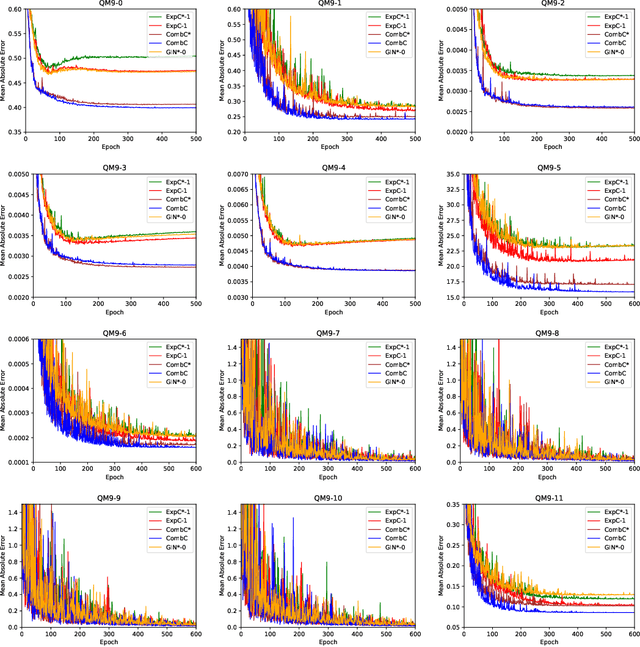
Abstract:Recently, the Weisfeiler-Lehman (WL) graph isomorphism test was used to measure the expressiveness of graph neural networks (GNNs), showing that the neighborhood aggregation GNNs were at most as powerful as 1-WL test in distinguishing graph structures. There were also improvements proposed in analogy to $k$-WL test ($k>1$). However, the aggregators in these GNNs are far from injective as required by the WL test, and suffer from weak distinguishing strength, making it become expressive bottlenecks. In this paper, we improve the expressiveness by exploring powerful aggregators. We reformulate aggregation with the corresponding aggregation coefficient matrix, and then systematically analyze the requirements of the aggregation coefficient matrix for building more powerful aggregators and even injective aggregators. It can also be viewed as the strategy for preserving the rank of hidden features, and implies that basic aggregators correspond to a special case of low-rank transformations. We also show the necessity of applying nonlinear units ahead of aggregation, which is different from most aggregation-based GNNs. Based on our theoretical analysis, we develop two GNN layers, ExpandingConv and CombConv. Experimental results show that our models significantly boost performance, especially for large and densely connected graphs.
 Add to Chrome
Add to Chrome Add to Firefox
Add to Firefox Add to Edge
Add to Edge